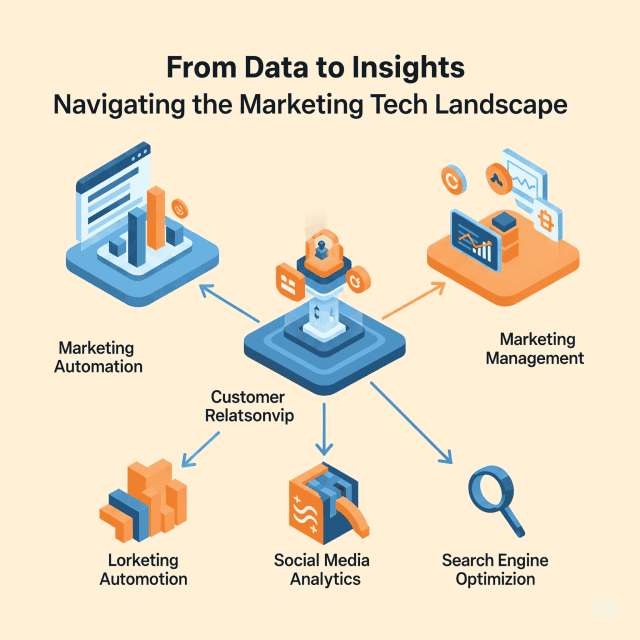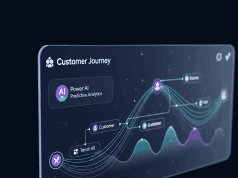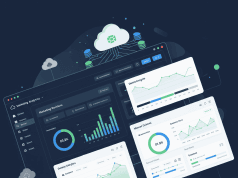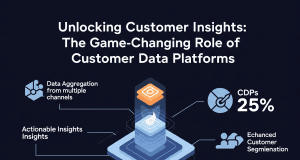In today’s rapidly evolving digital landscape, businesses generate an unprecedented volume of data. In this interconnected ecosystem, marketing technology, or MarTech, plays a pivotal role in transforming raw data into actionable insights. This article explores how organizations can effectively navigate the complex world of marketing technologies to glean meaningful insights that drive strategic decisions.
The Rise of Marketing Technology
The MarTech landscape has expanded significantly over the past decade, with thousands of tools and platforms available to marketers worldwide. According to the latest reports, there are over 8,000 MarTech solutions, encompassing everything from analytics tools and customer relationship management (CRM) systems to social media management platforms and marketing automation software. This growth underscores the importance of leveraging technology to optimize marketing strategies.
Key Components of the Marketing Tech Stack
- Data Collection and Management:
Customer Relationship Management (CRM) Systems: Tools like Salesforce and HubSpot centralize customer data, allowing for a unified view of interactions.Data Management Platforms (DMPs): These platforms aggregate data from various sources to create actionable profiles of potential customers.
- Analytics and Insights:Web Analytics Tools: Google Analytics and Adobe Analytics provide valuable data about user behavior, conversion rates, and traffic sources, helping marketers understand where visitors are coming from.
Business Intelligence (BI) Tools: Platforms like Tableau and Power BI allow for deeper data analysis, enabling marketers to visualize trends and derive insights from complex datasets.
- Automation and Communication:Email Marketing Platforms: Tools such as Mailchimp and ActiveCampaign automate communication, allowing for personalized interactions based on user behavior.
Social Media Management Tools: Platforms like Hootsuite and Buffer streamline content scheduling and analytics, making it easier to manage multiple accounts.
The Data-to-Insight Journey
Transforming data into insights involves several crucial steps:
- Data Collection:
Gathering data from various channels—website, social media, email campaigns, and offline interactions—is the first step. Integrating different data sources ensures a comprehensive view of customer behavior and preferences. - Data Cleaning and Preparation:Raw data often contains inaccuracies and inconsistencies. Implementing data cleaning processes is essential to ensure the reliability of the insights generated.
- Data Analysis:
Advanced analytics techniques, including descriptive, predictive, and prescriptive analytics, enable marketers to understand historical trends, forecast future behavior, and recommend actions. - Data Visualization:
Presenting data in a visual format helps stakeholders grasp complex information quickly. Effective dashboards and reports can illuminate key performance indicators (KPIs) and facilitate data-driven decision-making. - Feedback and Iteration:
Continuous feedback from analytical insights should inform strategy adjustments. Testing different approaches and iterating based on data results ensures constant optimization.Challenges in the MarTech Landscape While the benefits of MarTech are significant, inherent challenges exist:
Data Overload: Marketers can easily become overwhelmed by the sheer volume of data available, making it difficult to discern what is relevant.
Integration Issues: Many marketing tools operate in silos, leading to fragmented data. Ensuring that systems can communicate and share data seamlessly is vital.
Keeping Pace with Change: The MarTech landscape is constantly evolving. Marketers must stay informed about new technologies and best practices to remain competitive.Best Practices for Navigating MarTech
Define Clear Objectives:
Understanding what you want to achieve with your marketing efforts will guide your choice of technologies and metrics to track.
Prioritize Integration:
Look for solutions that work well together. A unified tech stack enhances data consistency and provides a holistic view of marketing efforts.
Foster a Data-Driven Culture:
Encouraging a mindset that values data-driven decision-making at all organizational levels ensures that insights are leveraged effectively.
Invest in Training:
Ensuring that stakeholders are skilled in using MarTech tools maximizes their potential. Regular training sessions can keep the team updated on best practices.
Measure and Refine:
Continuously monitor results and be prepared to pivot strategies based on what the data reveals. A/B testing different campaigns can unveil what resonates best with the audience.
Conclusion
Navigating the marketing tech landscape can be daunting, but by strategically leveraging data and technology, organizations can unlock insights that drive business growth. As the digital world continues to evolve, those who harness the power of MarTech will not only keep pace but also lead the market with informed, effective marketing strategies. Embracing a data-centric approach is no longer optional; it is a fundamental necessity for success in today’s competitive environment.









